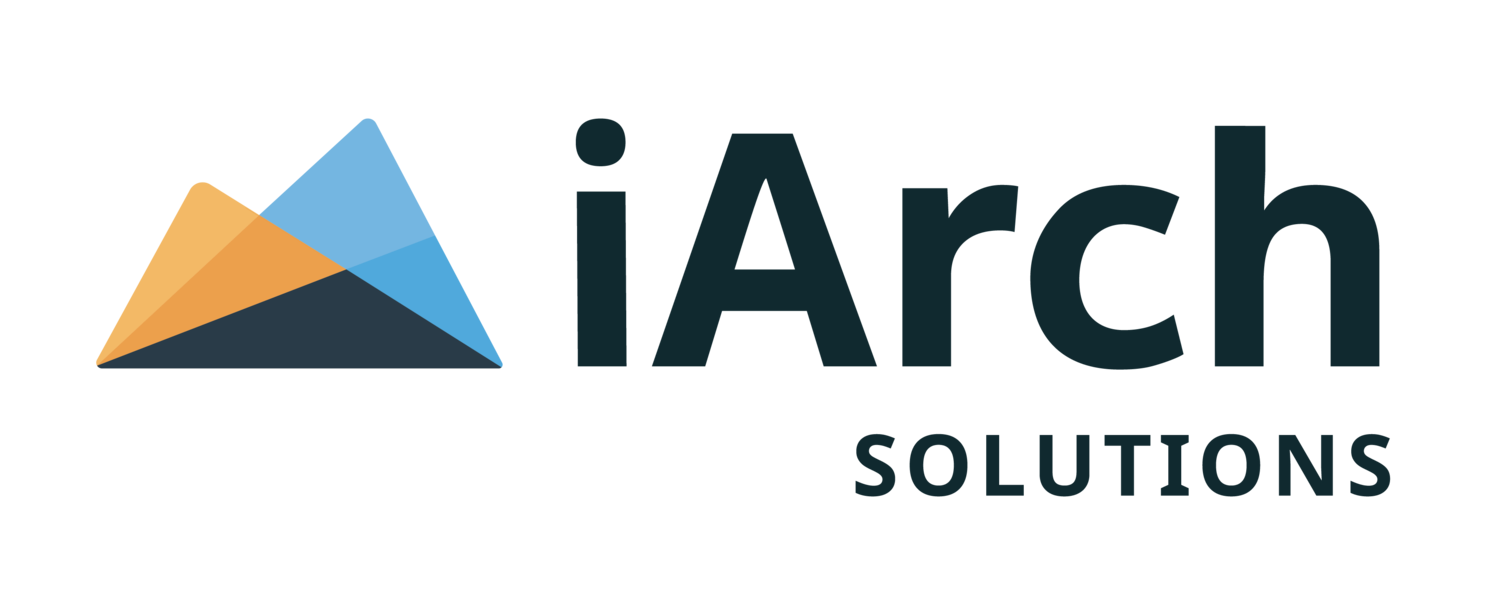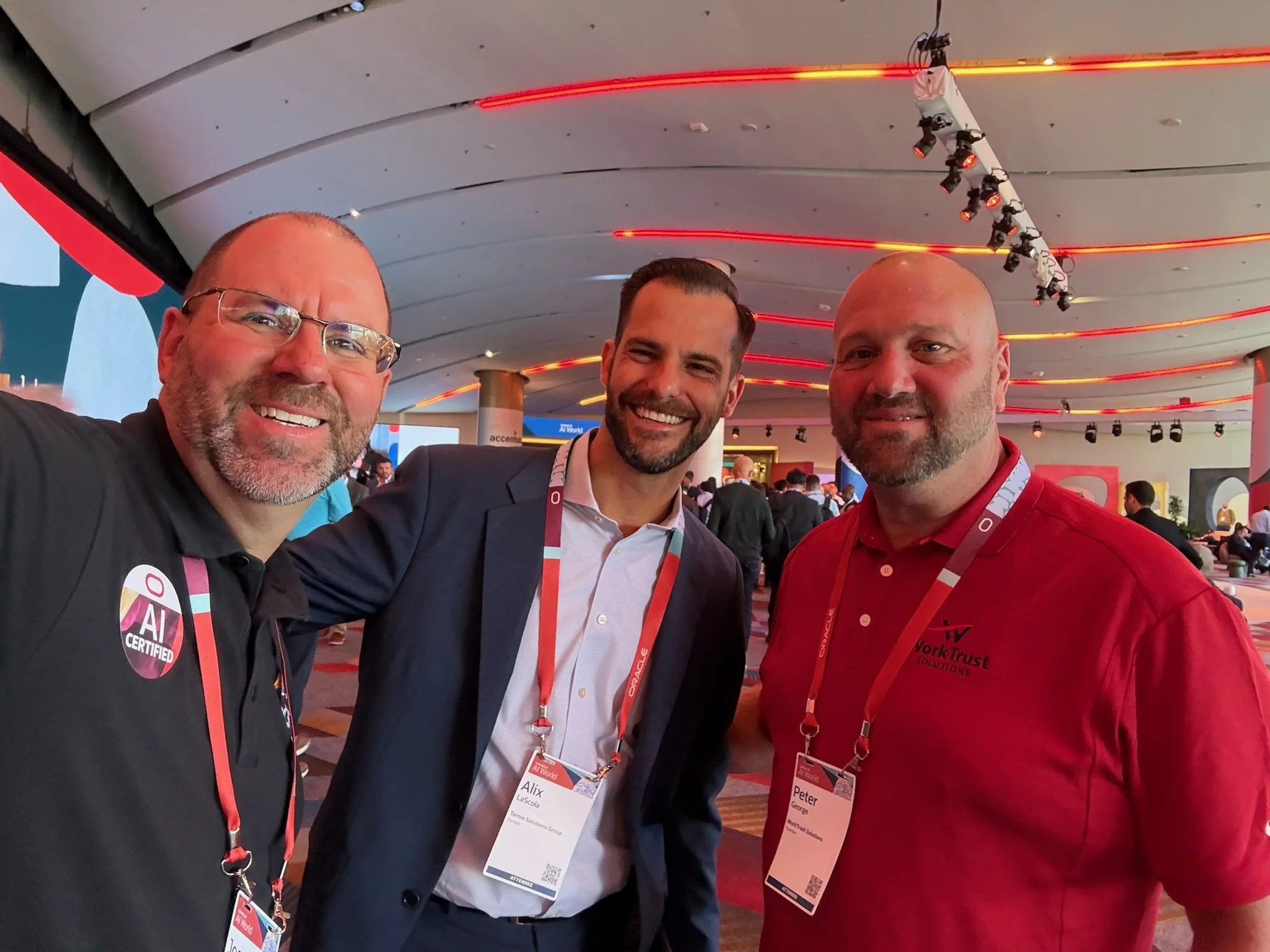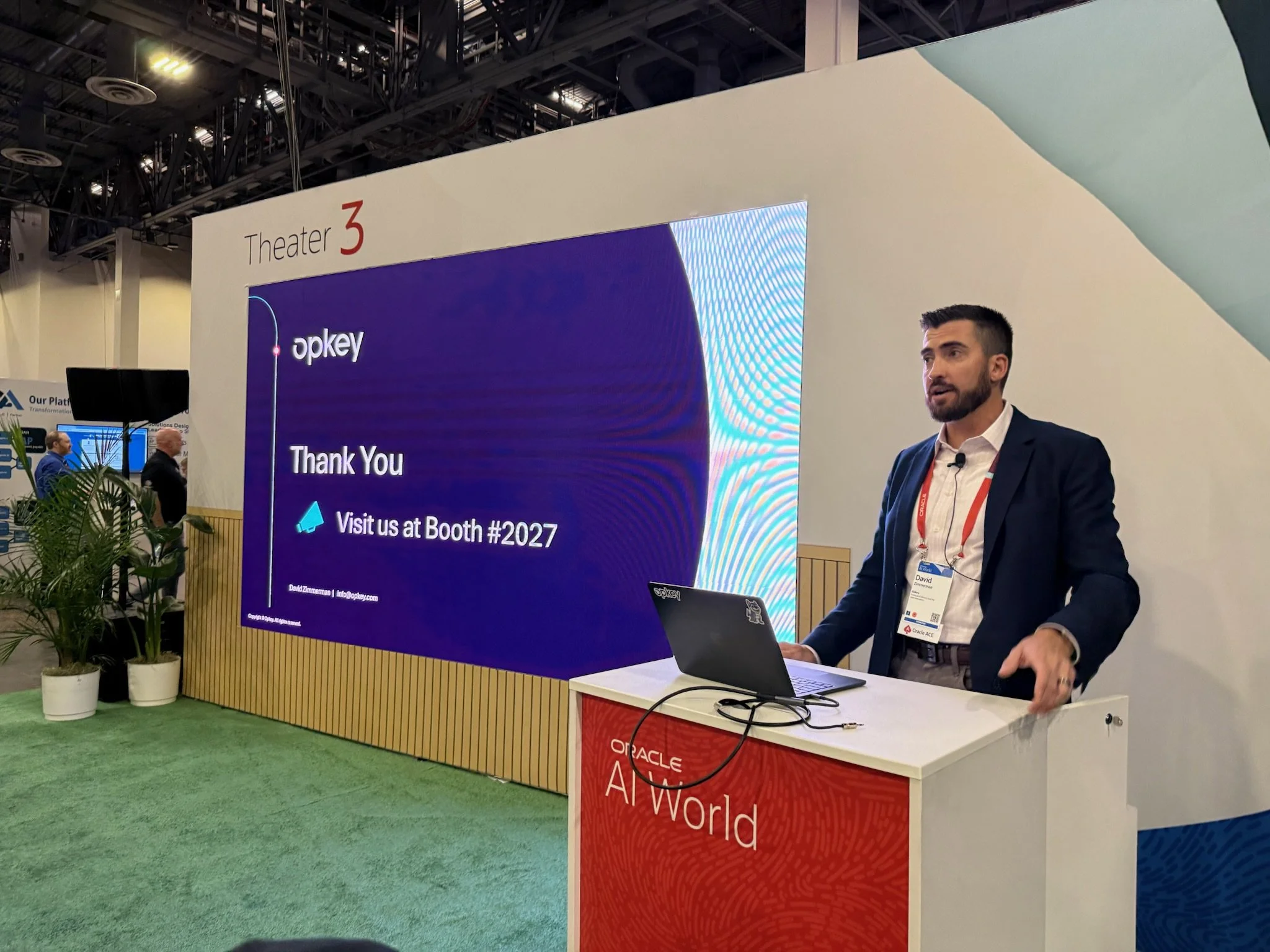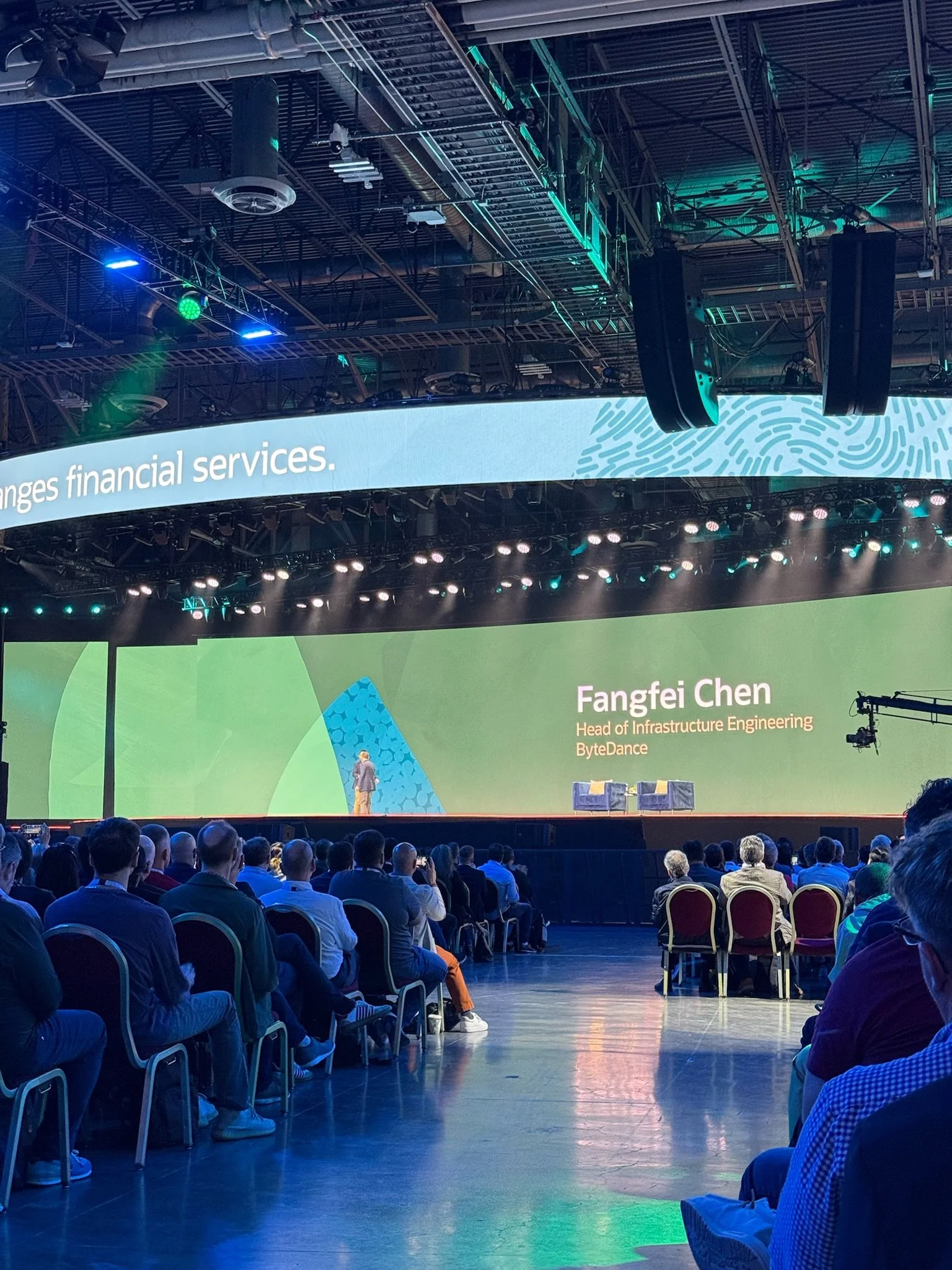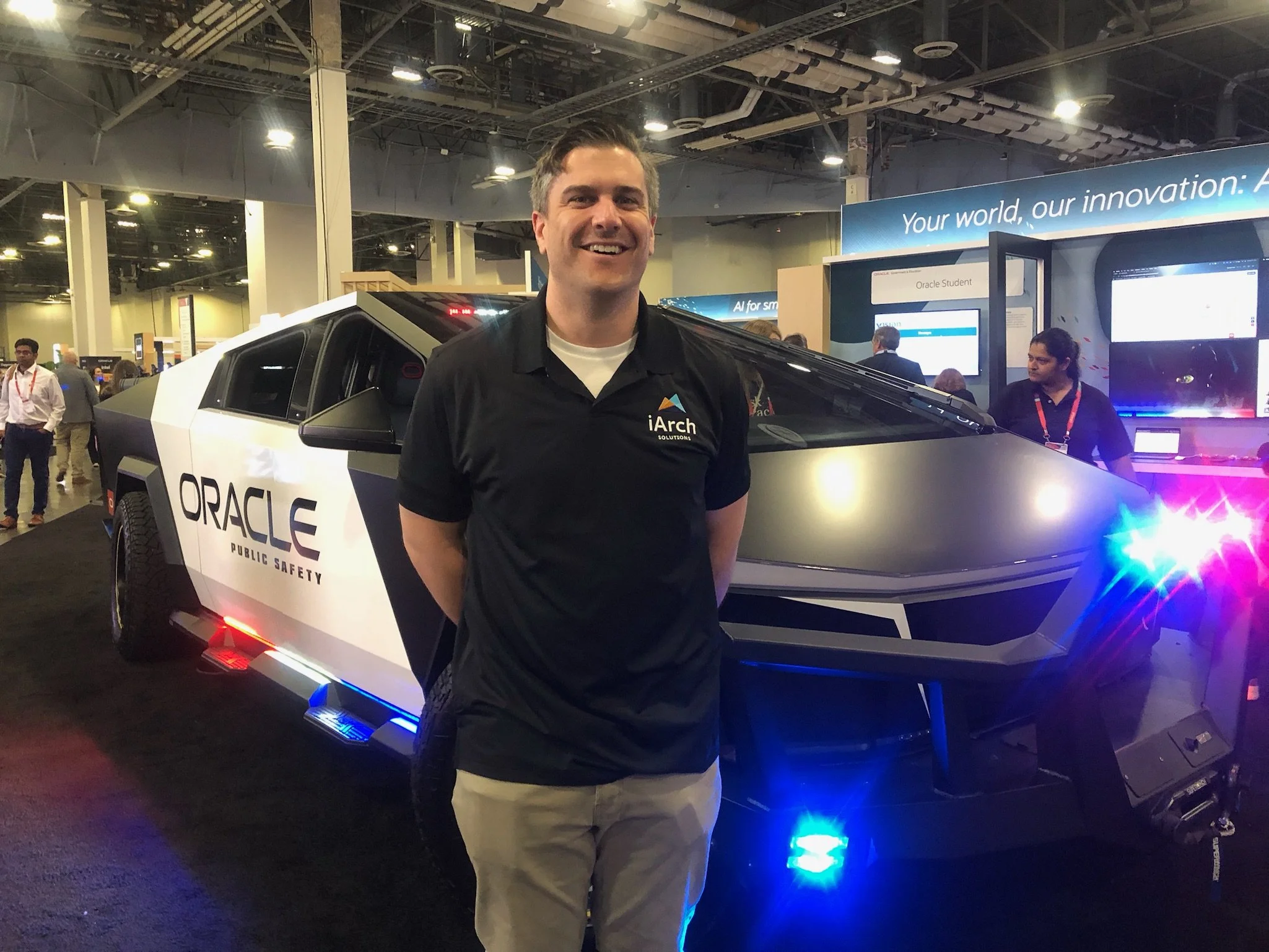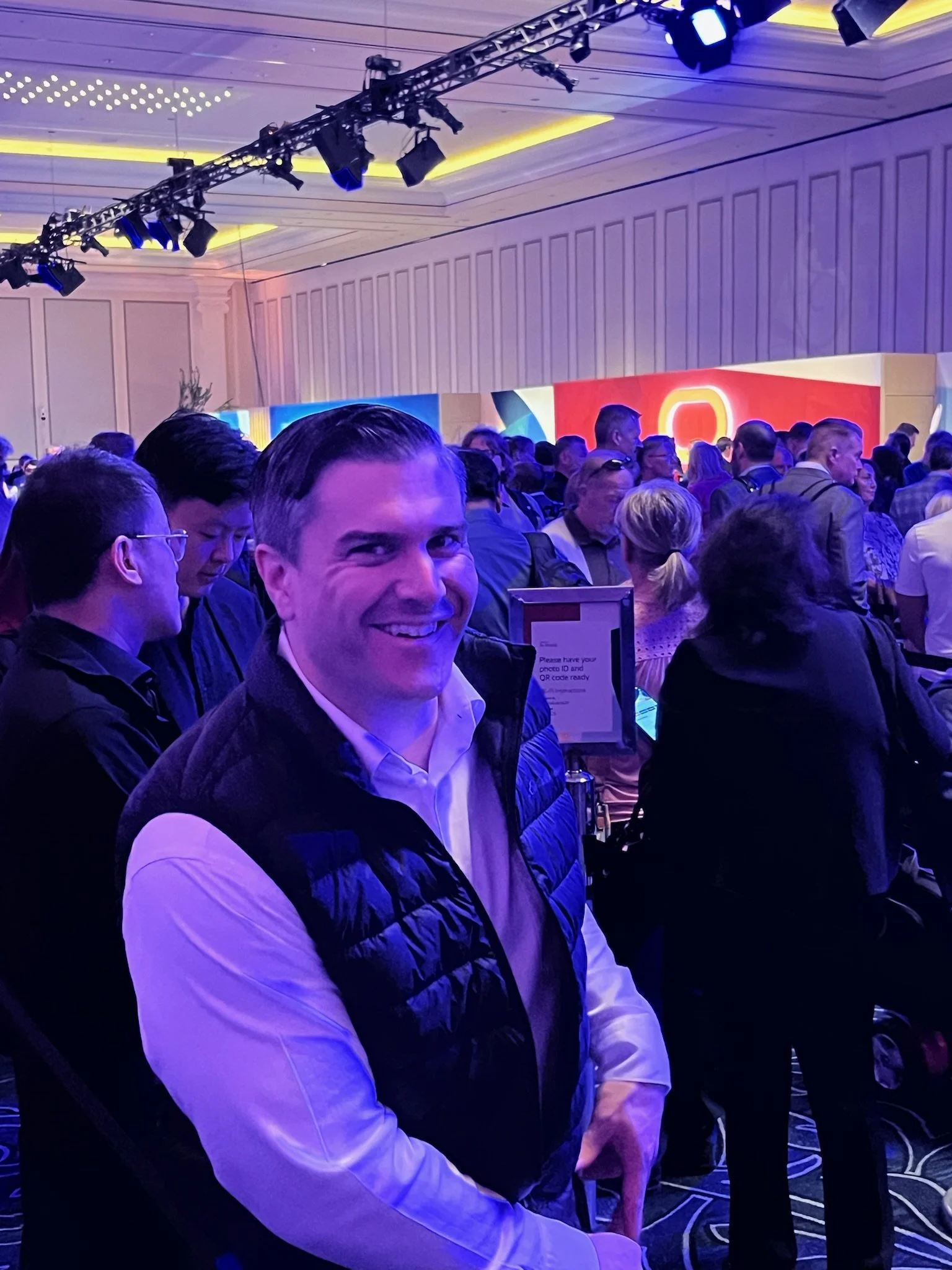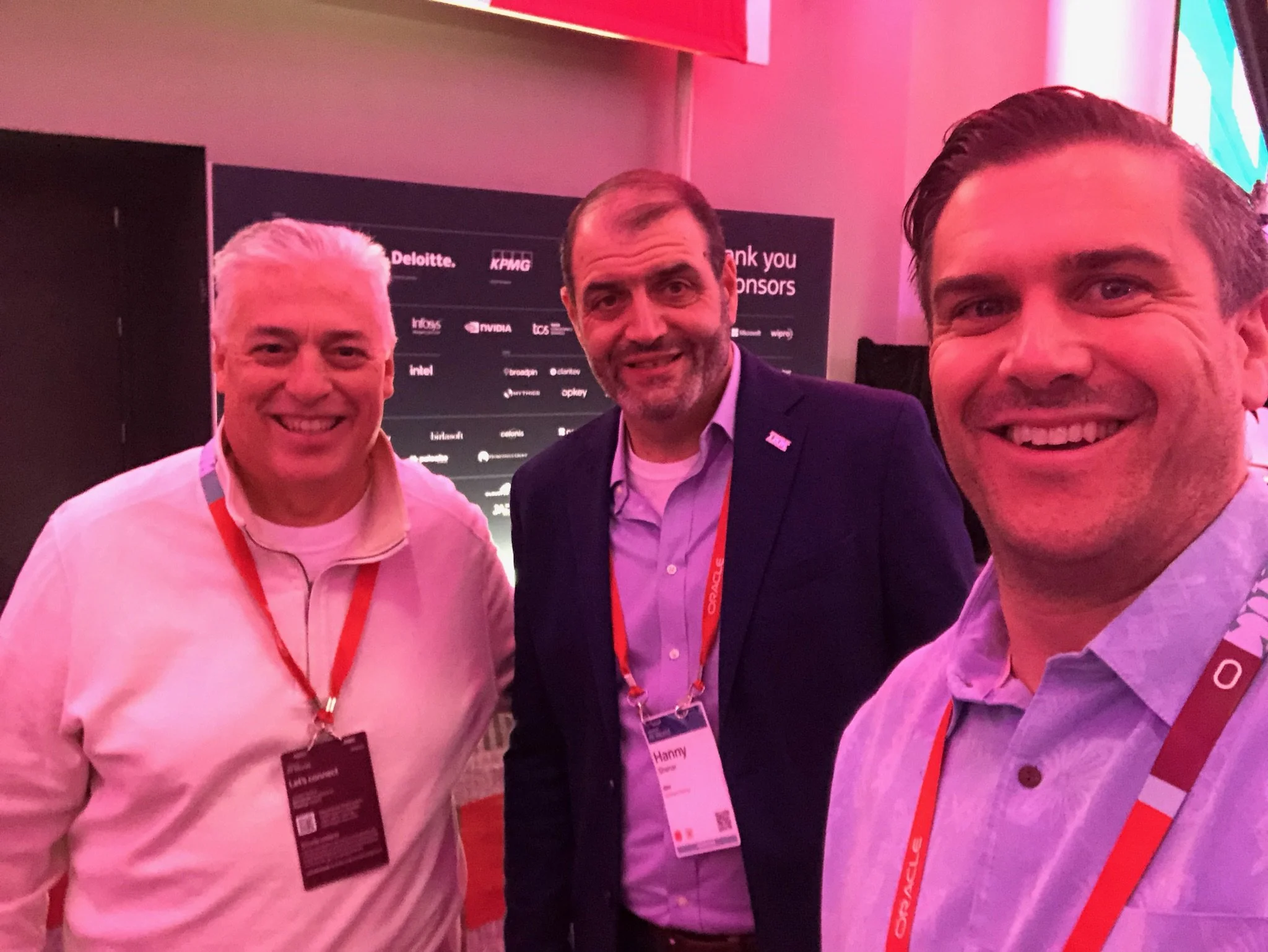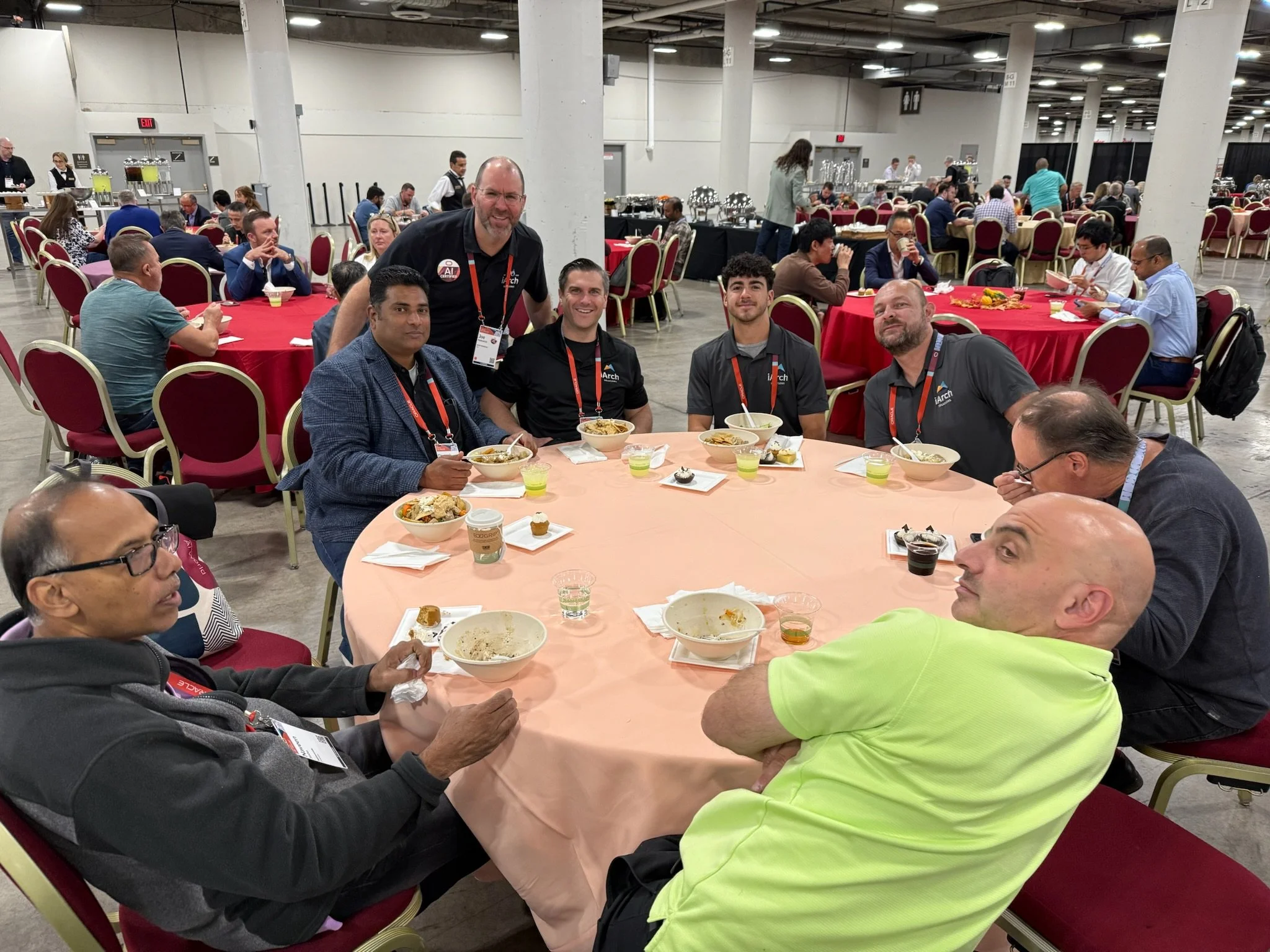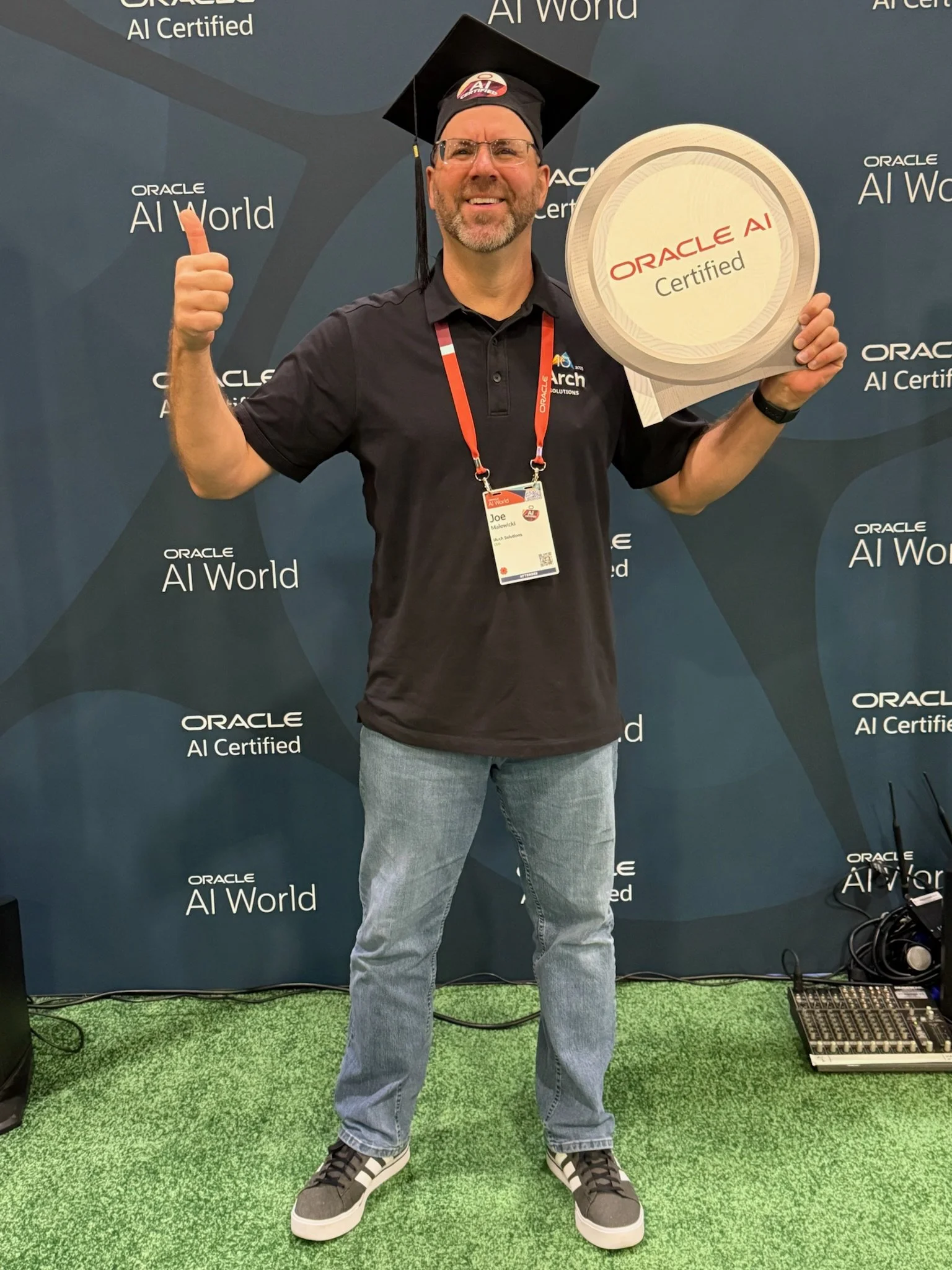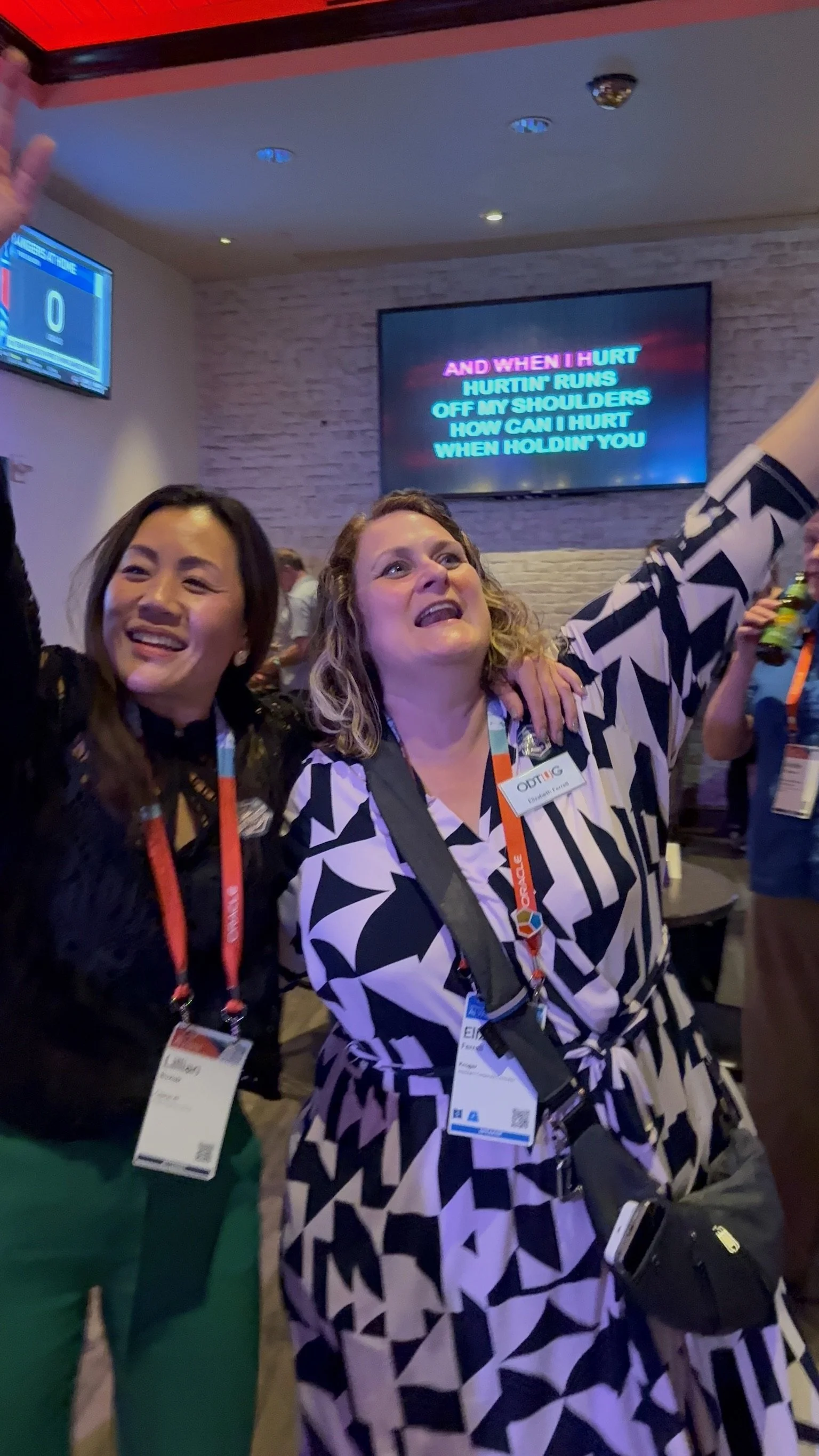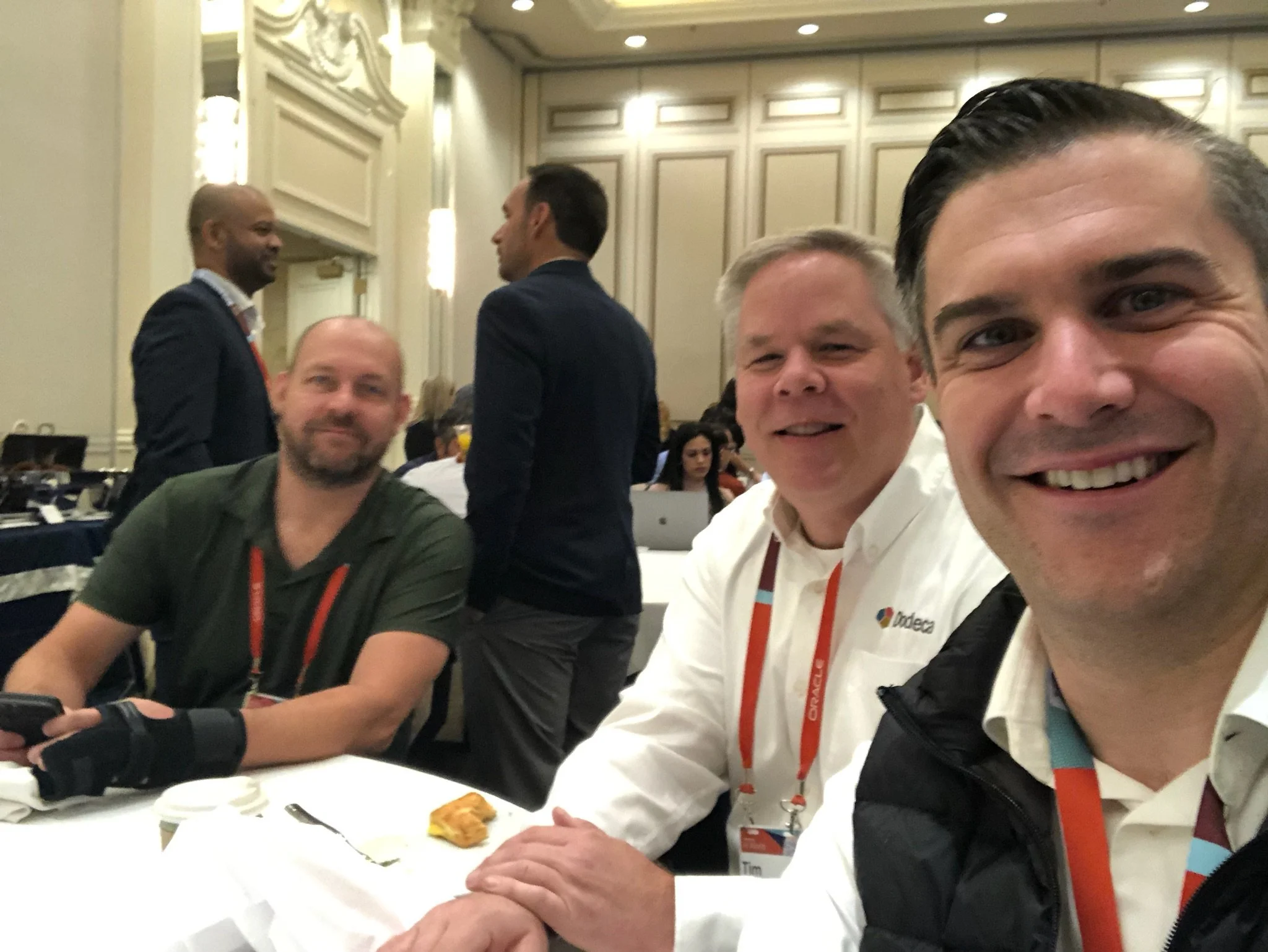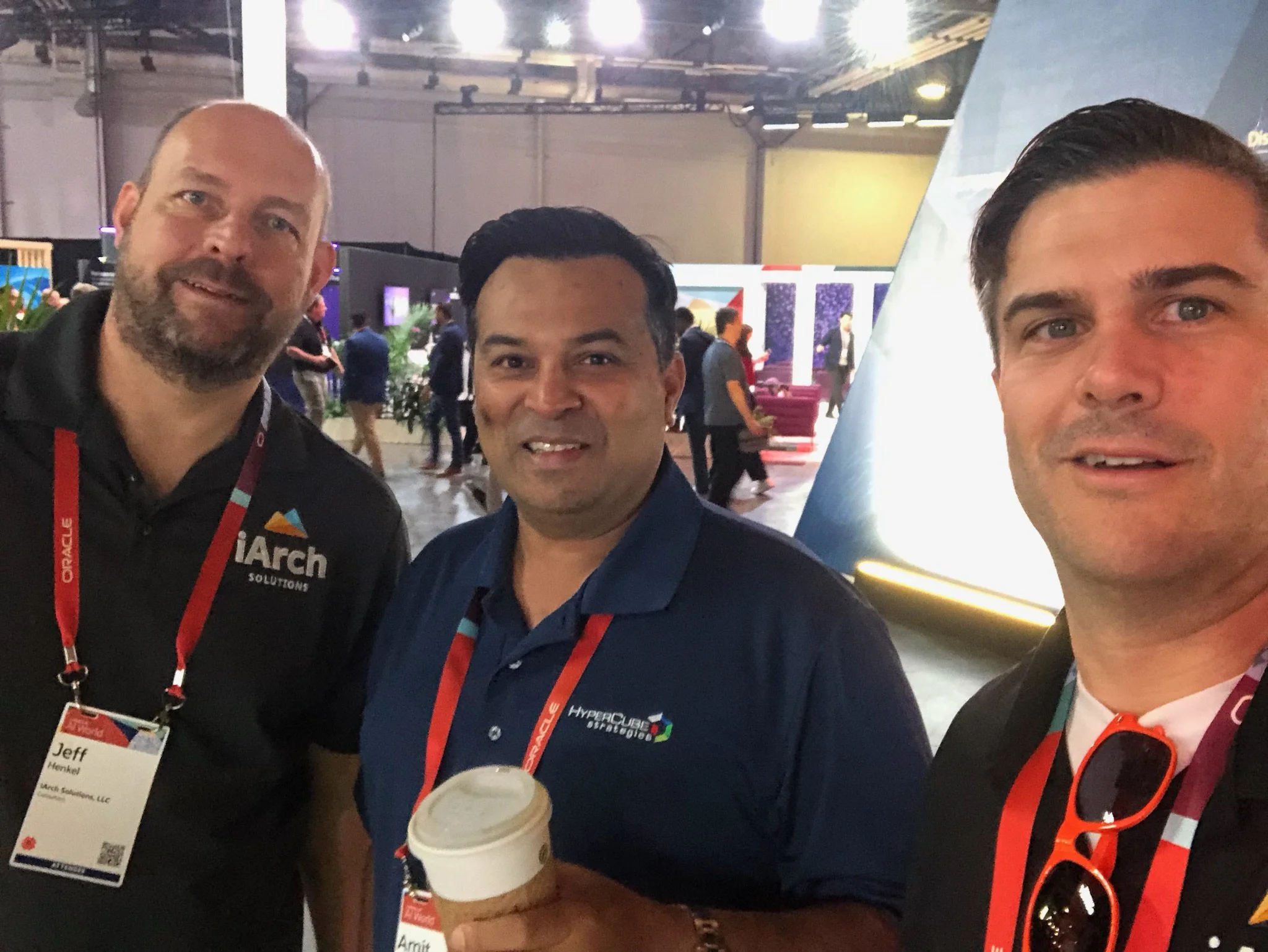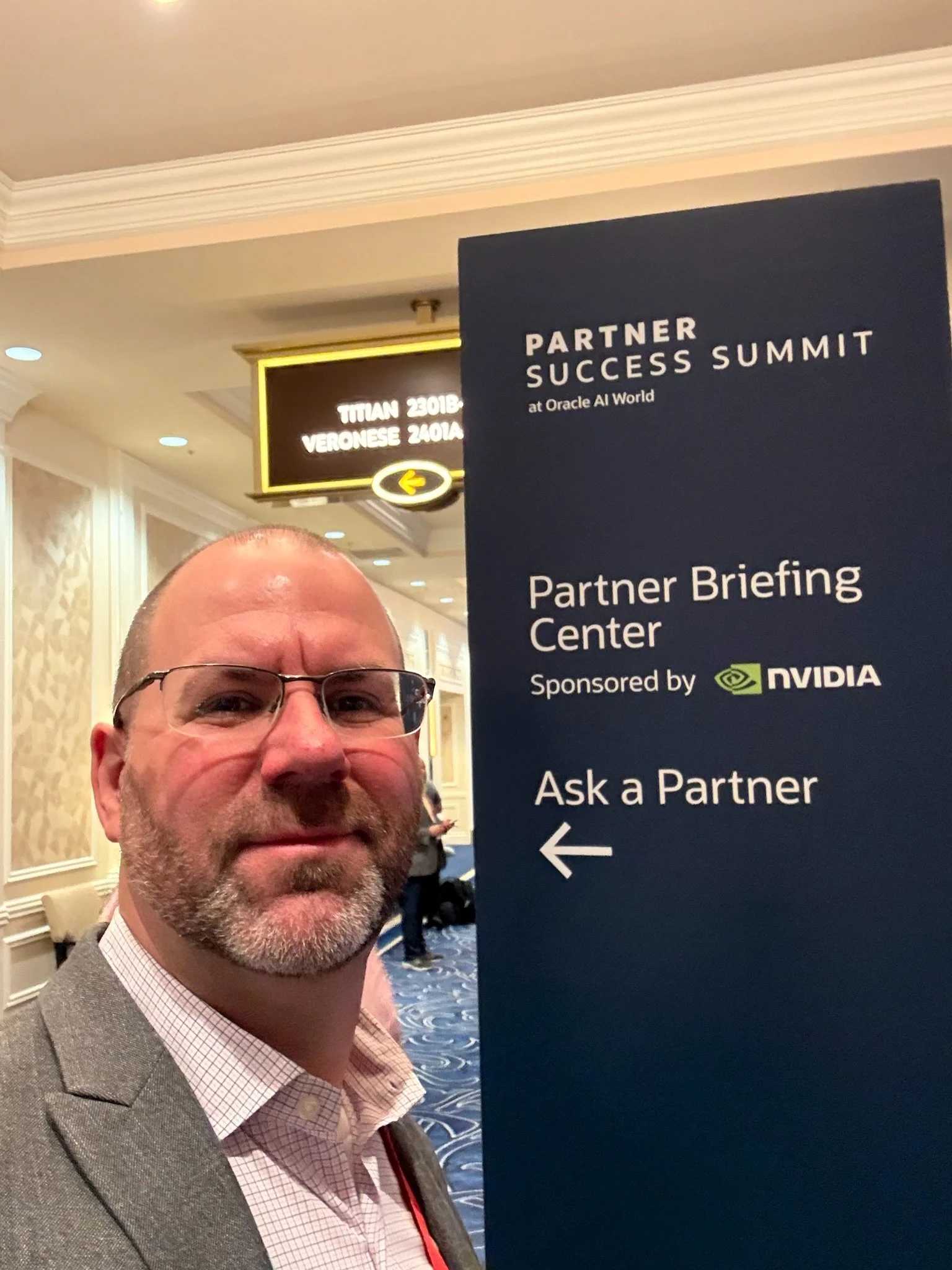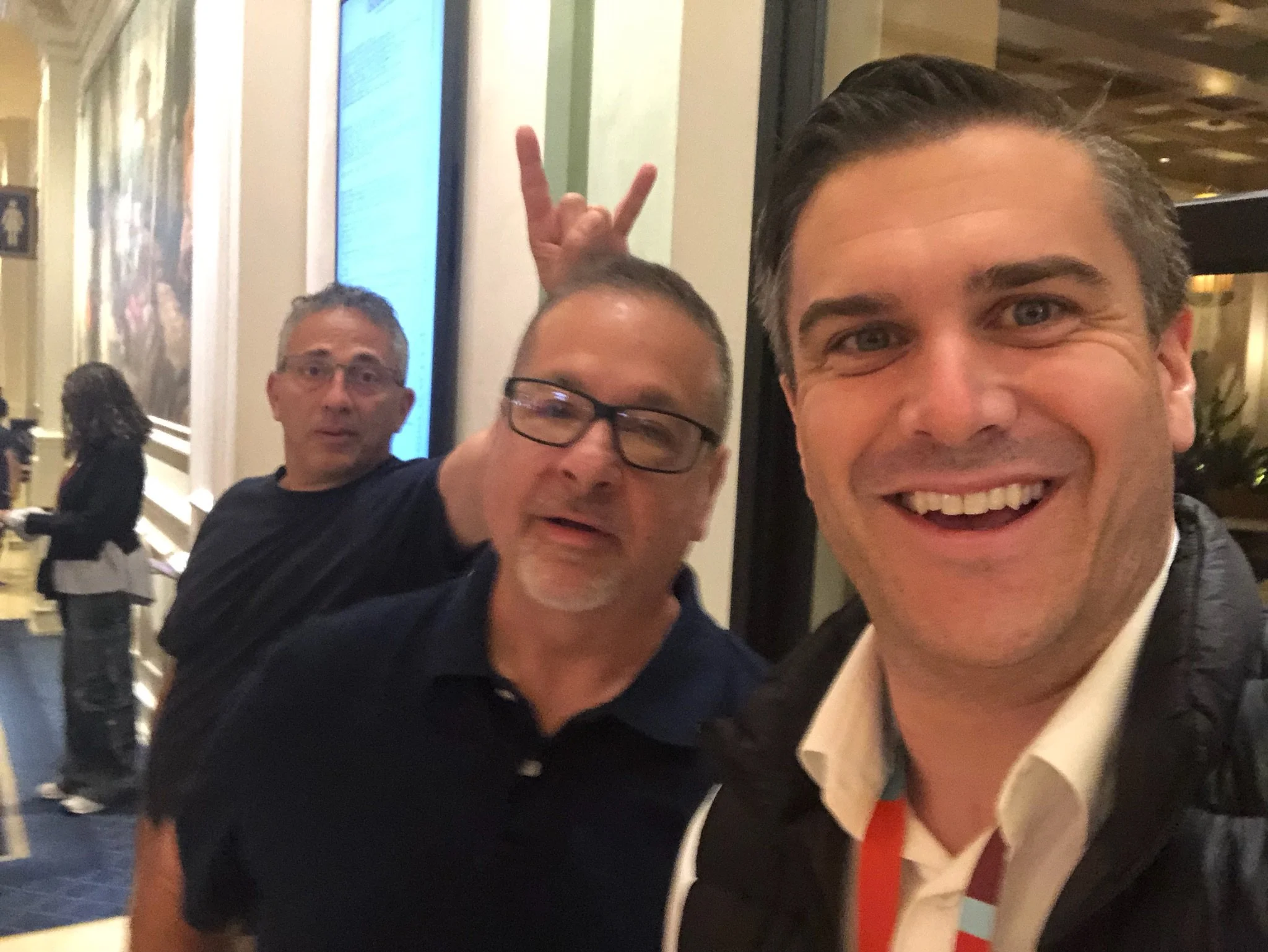Vegas Nights and Days at AI World 2025: What’s Next in Enterprise AI
When I walked into Oracle AI World 2025 in Las Vegas for day one, I knew this wouldn’t just be another tech conference. With the event rebranded (formerly Cloud World) and clearly signaling that generative AI and enterprise agents are now firmly center stage, the vibe was both electric and ambitious.
Over the course of all three days, I attended:
• The EPM Partner Summit, where AI integration and how it is transforming enterprise performance management (EPM) was a key theme.
• The main keynotes, where the big vision and strategy from Oracle Corporation’s leadership and field customers were laid out.
• The new product and agent-platform announcements, especially around Oracle AI Agent Studio.
• Evening networking events, including the one hosted by Dodecca and ODTUG, where the more informal, human side of the conference really came alive.
Here are my key themes and takeaways from the event.
The AI Momentum Is Unmistakable
From the keynotes, partner presentations, and the exhibition floor, the message was clear: AI isn’t optional anymore; it’s enterprise core. Leaders at Oracle talked about AI embedding at every layer: infrastructure, applications, and data.
What stood out:
• Massive scale ambition. The event made it clear that Oracle is betting big on being the cloud and AI platform of choice for the enterprise.
• From hype to execution. Customer case studies underscored that AI projects are no longer pilots. Enterprises are actively driving adoption.
• Partner ecosystem alert. The EPM Partner Summit highlighted that for EPM (and more broadly enterprise performance), AI integration is already a key differentiator. Concepts like agent-based automation, real-time insights, and predictive performance were front and center.
One personal anecdote: during a break in the EPM session, I chatted with a partner who said, “We used to sell storytelling dashboards. Now we’re selling AI agents that help CFOs decide next-quarter actions.” That felt like a tangible shift.
The Big Launch: AI Agent Studio and Agent Marketplace
One of the most concrete product announcements at the conference was the expansion of Oracle AI Agent Studio for Fusion Applications and the introduction of the AI Agent Marketplace.
What this means:
• The Studio gives customers and partners a design-time environment to build, configure, validate, and deploy AI agents and agent teams across their enterprise workflows.
• The Marketplace allows partner-built, Oracle-validated agents to be deployed directly within Oracle Fusion Applications.
• For use cases such as finance, HR, and supply chain, new agents can be embedded in supply chain modules to automate planning and fulfillment.
At the EPM Summit, the discussion turned toward how an EPM vendor or partner might use Agent Studio to build a “forecasting-to-planning” agent that monitors KPIs, triggers scenario analysis, and recommends actions—all within the EPM workflow. That was exciting because it brought the “agent” concept out of the generic AI lab and into a specific enterprise domain.
From my perspective, this functionality addresses a major enterprise pain point: bridging the gap between “AI shows me insight” and “AI helps me do something.” The agent is the action-oriented next step.
Deep Dive: EPM and AI Integration
At the EPM Partner Summit, the focus went beyond simply adding AI to EPM dashboards. It was about embedding intelligent process automation, insight generation, and agent orchestration into the planning, forecasting, and performance management lifecycle.
Some of the themes I picked up:
• Forecasts and simulations are being enhanced with generative models that propose alternative scenarios and highlight risk or opportunity points.
• Partners are now expected not just to deliver static reports but to offer AI-enabled workflows. For example: “If forecast X deviates by Y, trigger agent Z to propose a corrective plan.”
• Data governance and model governance are increasingly critical. Because we’re now talking about actionable agents, the risk profile grows, including bias, audit trails, and explainability. The Summit sessions stressed the need for “agent governance” in EPM.
• The human-agent interface. Partners emphasized that adoption comes from enabling users, such as CFOs and FP&A teams, to interact naturally (via conversational UI and embedded prompts) with agents rather than learning new tools.
From the event, I walked away thinking that if you are doing EPM and you’re not at least exploring agent-augmented planning, you’ll be in catch-up mode within 18 to 24 months.
Keynotes and Vision: From Big Picture to Execution
The main-stage keynotes were inspiring and filled with forward-looking statements, but also grounded in customer reality.
Highlights for me:
• The emphasis on data, infrastructure, and applications as the stack where AI will live. Oracle repeatedly emphasized that you can’t have enterprise AI without all layers aligned.
• Customers on stage, or referenced in sessions, shared how they are using AI to transform operations, not just add one more tool. This reinforced one of the key conference themes: operationalizing AI.
• A wink to the future. While many sessions focused on today and tomorrow (12 to 24 months), there were glimpses of agent teams, multi-agent orchestration, agent marketplaces, and ecosystems. The Agent Studio announcement ties directly into that.
• Networking and democratizing. The message wasn’t that only huge companies can do this. Partners and smaller customers were strongly represented, suggesting that Oracle sees a broad-based adoption model.
One snippet I jotted from a keynote stood out: “The era of AI isn’t about replacing humans; it’s about amplifying human decision-making through embedded agents.” It stuck with me.
The Human and Networking Side: Dodecca and ODTUG Evening Event
Beyond the sessions and product announcements, one of the most valuable parts of the conference was the evening networking events, especially the one hosted by Dodecca and ODTUG. These were not just cocktails and quick hellos. They offered real peer-to-peer stories: what’s working, what’s not, and where the investment is going.
Takeaways from those sessions:
• Many organizations are still in proof-of-value mode for agent-type projects. Interestingly, finance and supply chain have the strongest momentum.
• Vendors and partners are evolving their offerings accordingly, moving from “we deliver dashboards” to “we build agents for FP&A, supply chain, and HR.”
• The informal discussions made clear that while the product announcements are exciting, real adoption still needs change management across people, process, and governance.
• On a lighter note, the energy, camaraderie, and informal chats were a reminder that tech conferences can still offer meaningful human connection, even in an era dominated by AI.
My Top 5 Takeaways
Agent orientation is the next frontier. The shift from insights to agents acting within workflows was everywhere.
EPM and enterprise planning feel the disruption now. Especially in finance and FP&A, the notion of AI-augmented planning is moving fast.
Ecosystem matters. Not just Oracle and your company, but partners, marketplaces, templates, agent libraries, and governance frameworks. The Agent Studio and Marketplace announcements formalize this.
Adoption is the challenge. Many organizations have the data and infrastructure, but less maturity around governance, culture, and orchestration of agents.
Networking still counts. The evening events, informal chats, and peer stories provided perspectives you don’t always get in keynotes.
Final Thoughts
Oracle AI World 2025 felt like a milestone event, not just for Oracle but for the enterprise AI landscape more broadly. The rebranding, the scale, the focus on agents, and the partner ecosystem all suggest that we are moving into a phase where AI is operational, embedded, and workflow-centric.
For those of us working in enterprise systems such as EPM, finance, supply chain, and HR, the implication is clear. If you haven’t started planning how agents will interact with your processes, you are likely behind. However, if you use the next few months to experiment, test, and prototype, you will be well positioned for 2026, when the focus shifts from “we’re thinking about AI” to “we have AI working.”
My time at AI World 2025 reminded me just how fast technology is evolving—and how important it is to stay ahead of the curve. The team walked away with fresh insights, new tools, and a renewed commitment to helping our clients turn AI innovation into real business impact. At iArch Solutions, we believe that when your systems are reliable and resilient, you can stop worrying about IT and focus on growing your business.
Now is the time to get ahead of AI, not wait for it to catch up to you. Whether you’re exploring enterprise agents, modernizing your EPM systems, or just starting your AI journey, our team is here to guide you every step of the way with calm, proven expertise.
Schedule a Discovery Call today to see how we can help you build confidence in your technology, unlock agility, and transform your systems into a strategic advantage.
